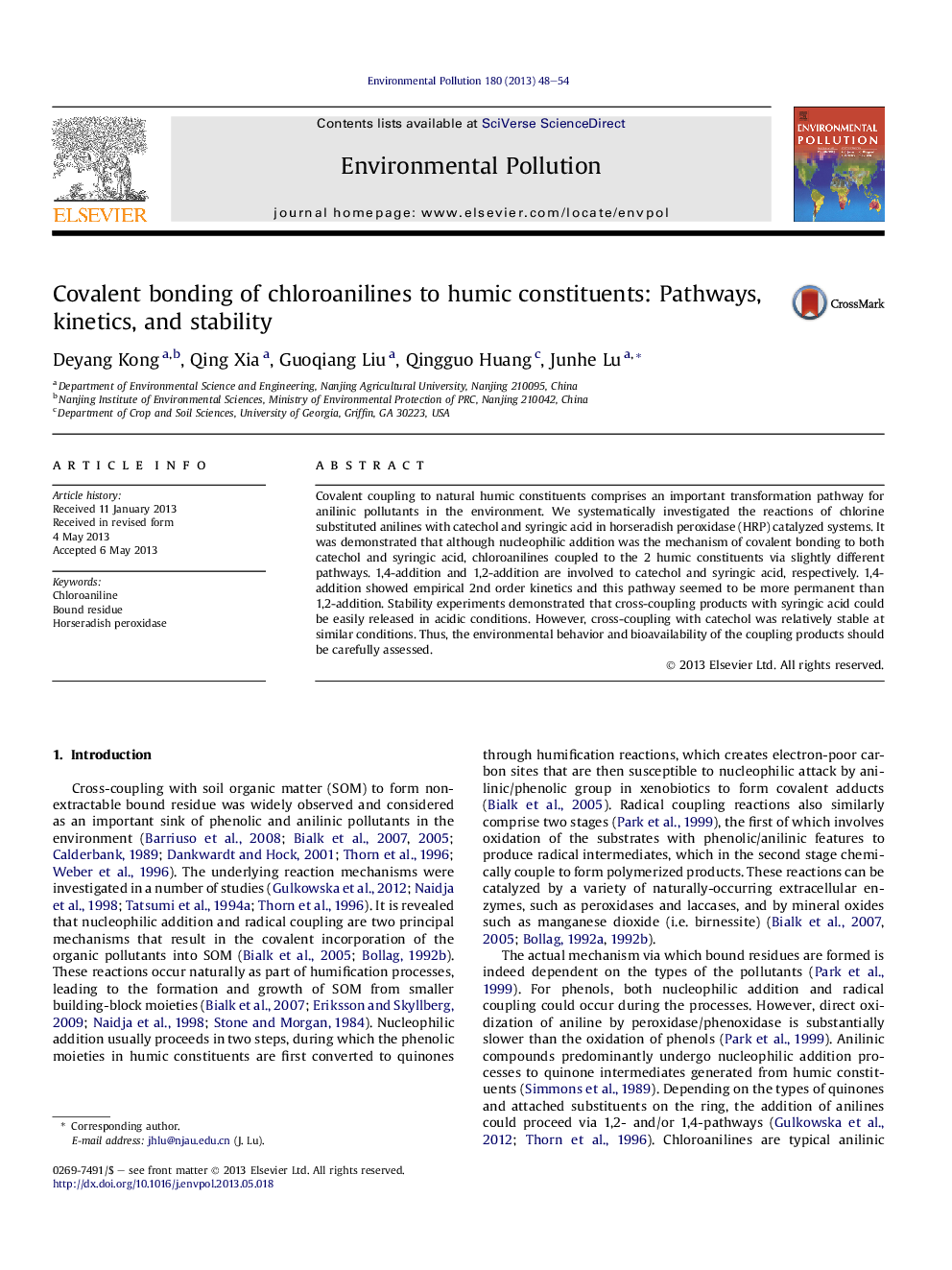| Article ID | Journal | Published Year | Pages | File Type |
|---|---|---|---|---|
| 6317695 | Environmental Pollution | 2013 | 7 Pages |
Abstract
Covalent coupling to natural humic constituents comprises an important transformation pathway for anilinic pollutants in the environment. We systematically investigated the reactions of chlorine substituted anilines with catechol and syringic acid in horseradish peroxidase (HRP) catalyzed systems. It was demonstrated that although nucleophilic addition was the mechanism of covalent bonding to both catechol and syringic acid, chloroanilines coupled to the 2 humic constituents via slightly different pathways. 1,4-addition and 1,2-addition are involved to catechol and syringic acid, respectively. 1,4-addition showed empirical 2nd order kinetics and this pathway seemed to be more permanent than 1,2-addition. Stability experiments demonstrated that cross-coupling products with syringic acid could be easily released in acidic conditions. However, cross-coupling with catechol was relatively stable at similar conditions. Thus, the environmental behavior and bioavailability of the coupling products should be carefully assessed.
Related Topics
Life Sciences
Environmental Science
Environmental Chemistry
Authors
Deyang Kong, Qing Xia, Guoqiang Liu, Qingguo Huang, Junhe Lu,
